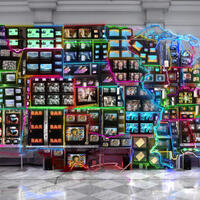More about Annibale Carracci
Works by Annibale Carracci

Contributor
Annibale Carracci, the beau of the Italian Baroque era, initially had to share the limelight with his brother Agostino and cousin Lodovico.
The three Carraccis were first apprenticed within the family as painters and eventually opened a studio together. As dudes often do, they gave this business venture a not-so-humble moniker-- the Incamminati. This roughly means “of those opening a new way,” but we’re pretty sure that the name actually got lost in translation and that these guys were bona fide Illuminati.
Although much of the studio’s initial work was a collaborative effort between the three Carraccis, Annibale quickly set himself apart as the star of the show. His eclectic style borrowed influence from both Titian and Michelangelo and was well suited to massive frescoes. Annibale painted for the cream of the crop-- cardinals, dukes, and wealthy elites across the European continent. Even Peter Paul Rubens was a fan.
In a letter from April 1606, patron Cardinal Odoado Farnese described the “heavy melancholic humor” that had prevented Annibale from painting for him. Farnese may well have been the cause of this melancholy-- Annibale spent the best years of his career painting for the Cardinal, who persistently mocked his shabby outfits, stutter, and paralyzing shyness. After Annibale had completed the Farnese Gallery frescoes, Cardinal Farnese paid him a paltry 500 scudi.
From that point forward, Annibale’s brush was stilled. His acute depression may have led to his death in 1609, after which he was buried, according to his wishes, near Raphael in the Roman Pantheon.
Featured Content
Here is what Wikipedia says about Annibale Carracci
Annibale Carracci (/kəˈrɑːtʃi/ kə-RAH-chee,
UK also /kəˈrætʃi/ kə-RATCH-ee,
Italian: [anˈniːbale karˈrattʃi]; November 3, 1560 – July 15, 1609) was an Italian painter and instructor, active in Bologna and later in Rome. Along with his brother Agostino and cousin Ludovico (with whom he also worked collectively), Annibale was one of the progenitors, if not founders of a leading strand of the Baroque style, borrowing from styles from both north and south of their native city, and aspiring for a return to classical monumentality, but adding a more vital dynamism. Painters working under Annibale at the gallery of the Palazzo Farnese would be highly influential in Roman painting for decades.
Check out the full Wikipedia article about Annibale Carracci















